![Early-November Foliage: Recommended Hidden Spots [Western Area edition]](https://mktaxi-japan.com/kyoto/wp-content/uploads/sites/2/2025/11/紅葉穴場スポット18選-英語3.png)
Early-November Foliage: Recommended Hidden Spots [Western Area edition]
Takao, located in Ukyo Ward, has long been known as a famous spot for autumn foliage.
Takao autumn-foliage highlights
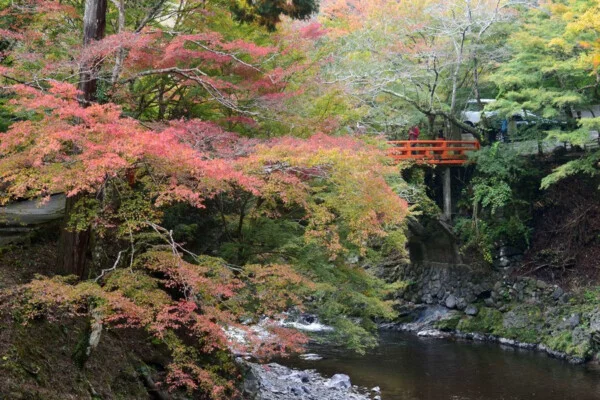
Takao is a scenic area that opens up after crossing the Mikyozaka Pass from Kyoto and entering the mountainous region.
Because it is a hidden spot surrounded by mountains, the autumn leaves can be seen slightly earlier than in central Kyoto, starting in early November.
Along the mountain stream of the Kiyotaki River, the red-tinted maple leaves appear as if they are gently covering the clear stream below.
When you look up, you can see patches of blue sky peeking through the canopy of autumn leaves above your head.
This is a landscape you cannot see in central Kyoto, and it can be enjoyed from early November.
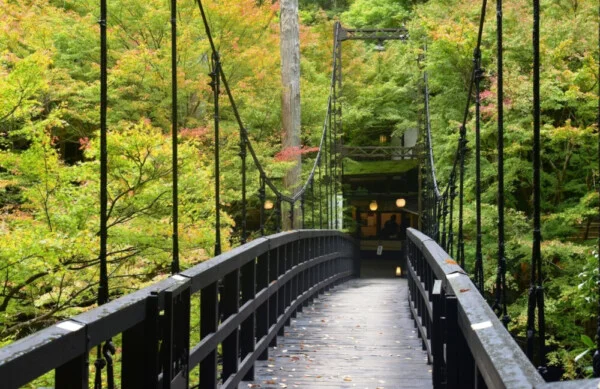
Takao is a well-known autumn leaves spot in Kyoto, famous since old times, so it’s not really a hidden place.
Even so, compared with the famous spots in Kyoto City at the peak season, it is much less crowded.
If you visit Kyoto in early November, I recommend coming here to see the autumn leaves.
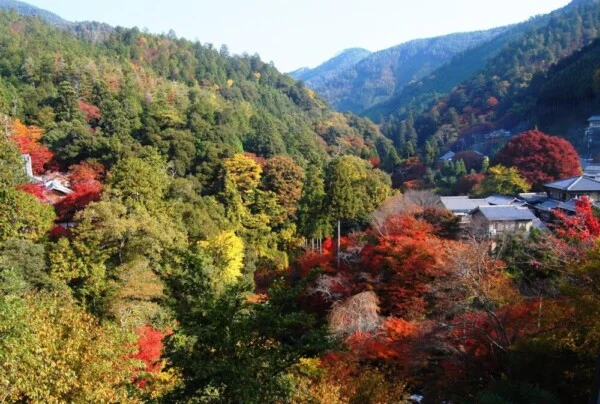
Hidden-gem rating: C
Takao is a well-known autumn-leaf viewing spot in Japan, and it has been chosen as an area to promote to help spread out visitors.
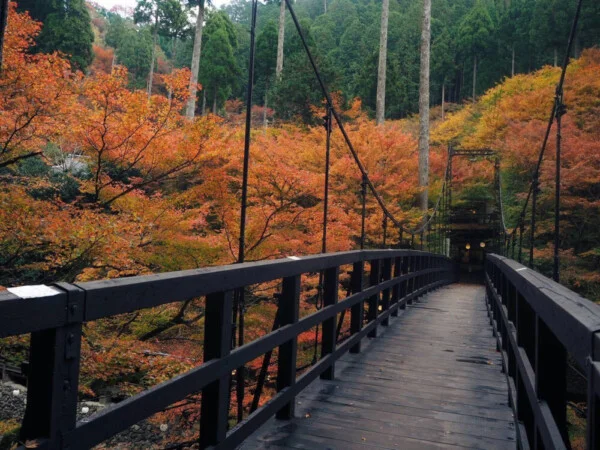
In Kyoto, new autumn-leaf spots keep popping up, so Takao is no longer a standout and has become a bit of a hidden spot.
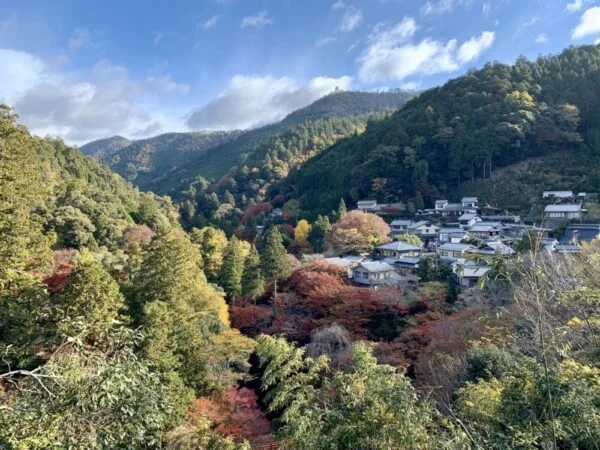
Beautiful autumn leaves at Jingo-ji Temple after 400 stone steps (Ukyo Ward).
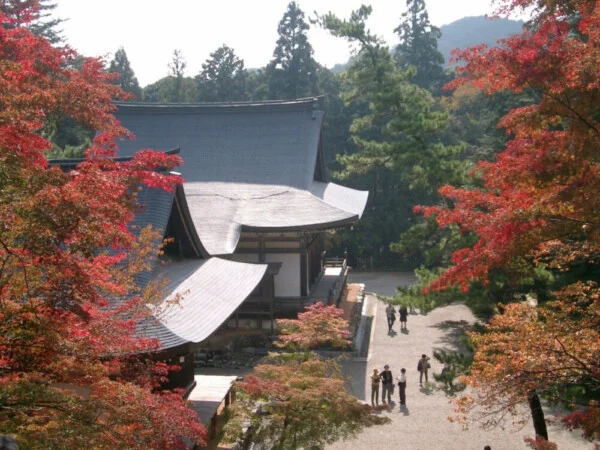
Jingo-ji autumn-foliage highlights
Among Kyoto’s famous “Sanbi” spot, Jingo-ji turns color early. After climbing 400 stone steps to about 200 m high, the temple area usually peaks in early November.
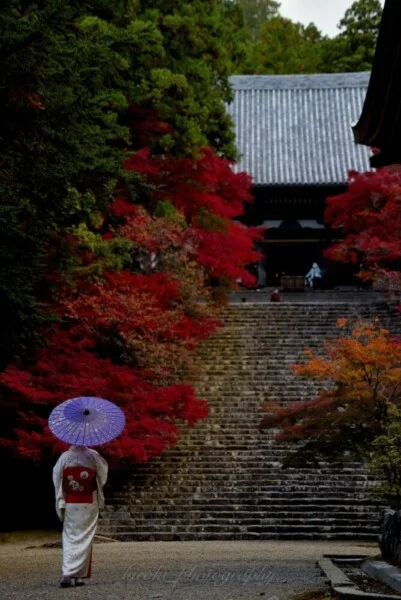
On the steep slope shaped by the Kiyotaki River’s V-shaped valley, there are many leaf-viewing spots along the stairs, so you can enjoy the view as you climb.
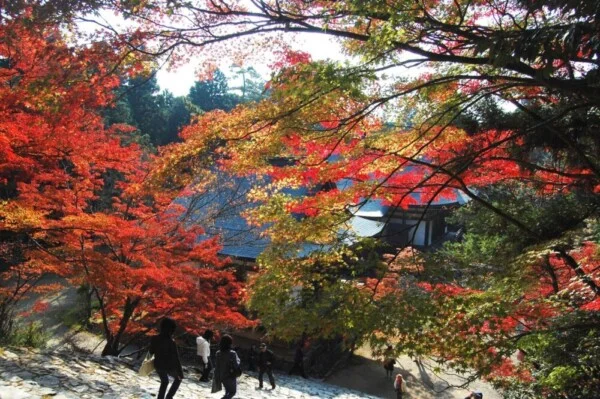
After you make it to the top, the hidden autumn leaves feel even more beautiful. Parts of the mountains are colored red and yellow.

In front of the tower gate, by the steps to the Main Hall, the view looking down from the Main Hall, and the valley view from the plate-throwing spot (kawarake-nage) — there are many good places for autumn leaves inside the grounds.
Unlike along the Kiyotaki River in Takao, you can enjoy crisp, bright fall colors here.
Hidden-gem rating: C
Jingo-ji is a famous autumn-leaf spot in Kyoto’s “Sanbi” area, so it’s not really a hidden place.
But there are about 400 steps, and the grounds are fairly large, so even in peak season it usually doesn’t feel too crowded.
Yoshimine-dera: Autumn leaves with the Kyoto Basin as the backdrop (Nishikyō Ward).
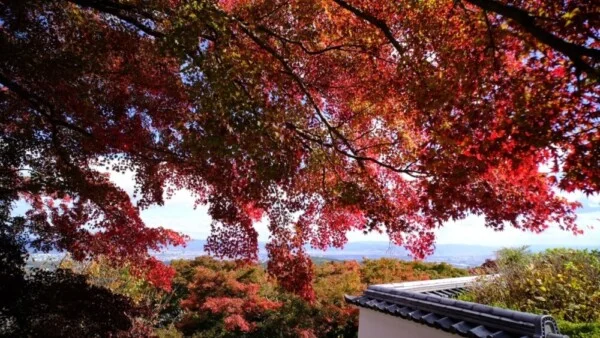
Yoshimine-dera autumn-foliage highlights
Yoshimine-dera is on the slope of Mt. Shaka in Kyoto’s western hills, about 300 m high.
It’s about 2°C cooler than central Kyoto, so the season (autumn colors) comes roughly 10 days earlier.

The autumn leaves reach their best from early November, earlier than in central Kyoto.
By mid-November they peak, and the views are stunning.
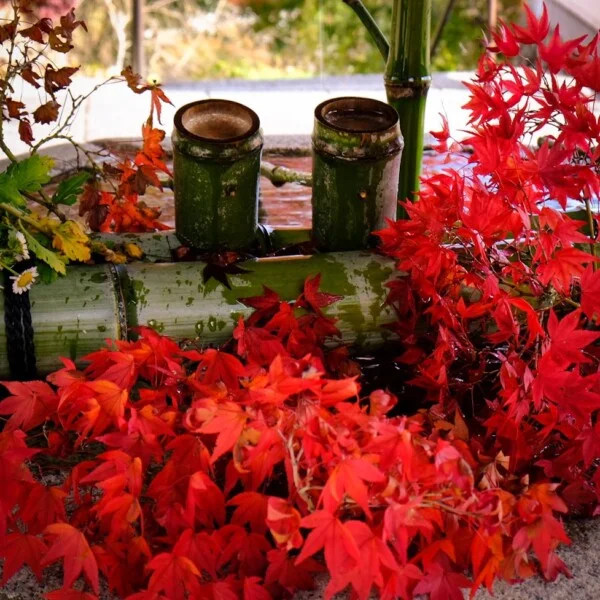
Yoshimine-dera sits high on the mountainside.
Its appeal isn’t just the earlier colors than central Kyoto—the great views from the temple grounds are the real draw.
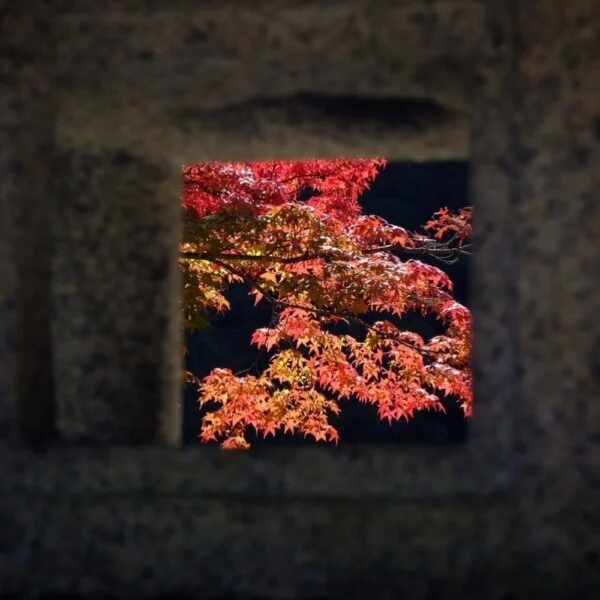
In early November, when the air is clear, you can see very far.
You can clearly see Mt. Hiei, the Higashiyama range, and even the Daigo mountains.
Many ways to enjoy the view—that’s the charm of Yoshimine-dera’s autumn leaves.
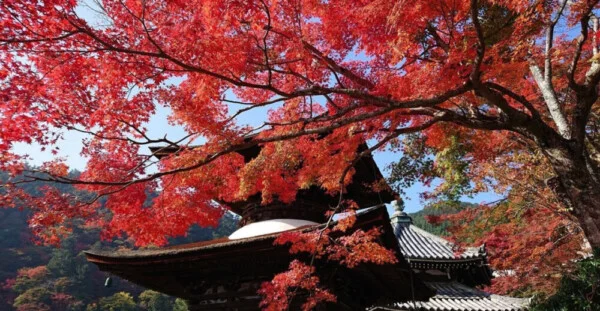
The grounds are wide with big elevation changes. From higher spots you can see maples filling the temple grounds and the Kyoto Basin below at the same time.
In early November, sunset is early and the western hills cast shade by late afternoon, so visit earlier in the day.
During the foliage season there’s a “Special Early Opening.”
In 2025, not only early November: from Sat Nov 2 to Mon Nov 24, the gate opens from 6:30 a.m.
Yoshimine-dera faces east, so it’s also a sunrise spot.
Around first light, the colors are especially beautiful.
If you want the sunrise, arrive right at the 6:30 opening.
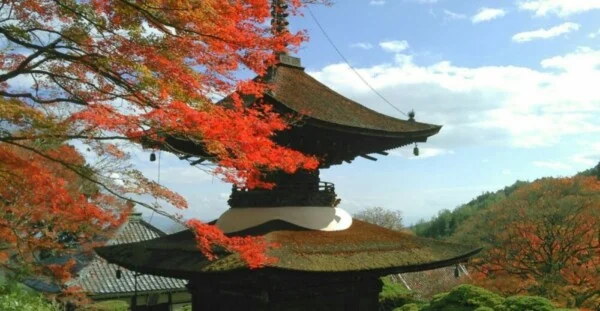
Because the grounds are large, it rarely gets crowded—a good hidden spot.
Next-door Sankoji Temple is also a recommended hidden place for autumn leaves, with colors from early November.
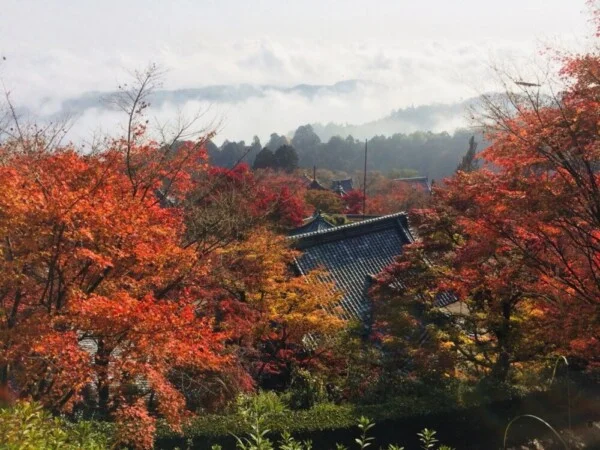
Hidden-gem rating: B
This famous temple was once called the Nishiyama Monzeki. In the Otokuni area, it’s the top fall-color spot after Aō Komyō-ji, so it’s not very “hidden.”
However, the grounds are large, so it usually doesn’t get too crowded.

With grand views you can’t see elsewhere and beautiful leaves—and it’s not very crowded—it’s fair to call it a hidden gem.
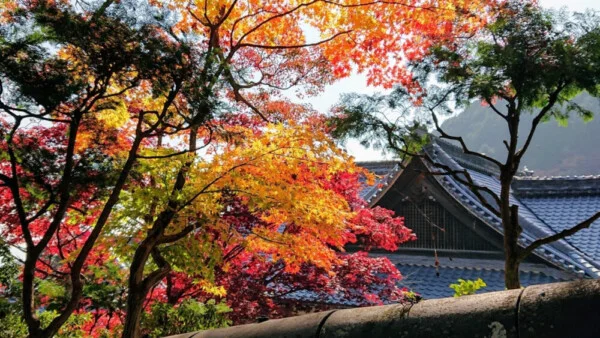
Kuwayama Shrine — Kameoka’s guardian deity and a famous autumn-leaf spot (Kameoka City).
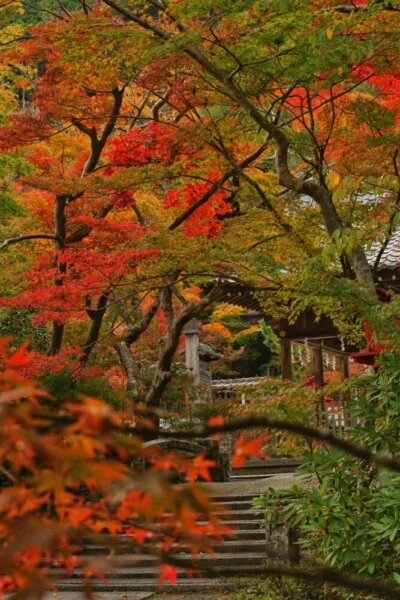
Kuwayama Shrine autumn-foliage highlights
From central Kameoka, just west of Kyoto, you pass calm farm fields to reach Kuwayama Shrine.
Inside the grounds there are about 1,000 maple trees, plus many Enkianthus (dodan-tsutsuji) shrubs.
From early November, red maple leaves above and red Enkianthus below turn your whole view bright red.
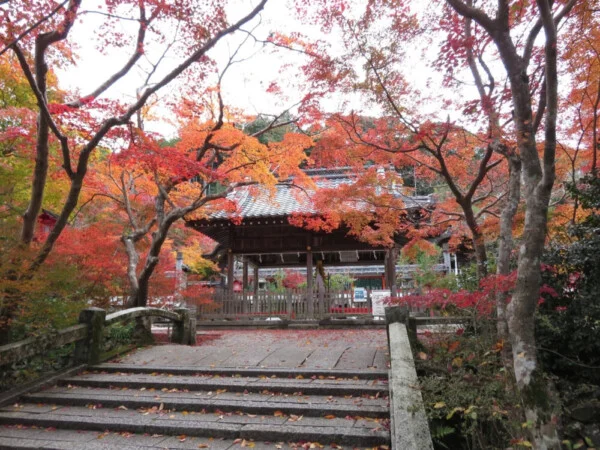
A night illumination is usually held in early November. After a COVID break, in 2025 it will run for five days: Sat Nov 8–Wed Nov 12.
Until 2024 it was only three days, so it’s been extended by two days.
In Kyoto City, some temples and shrines also start light-ups around this time, but the leaves there are usually only just starting to turn.
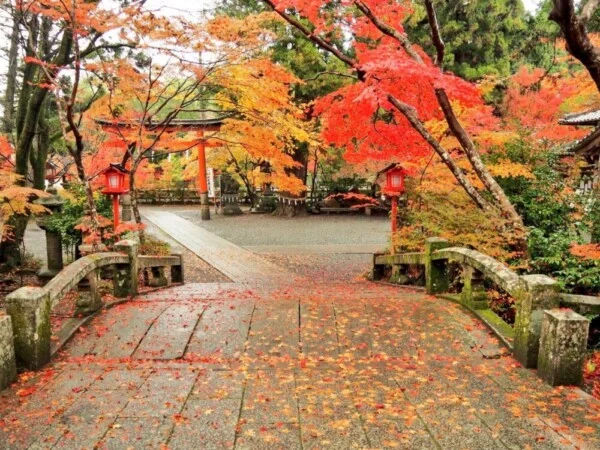
This is a revival after COVID has calmed down.
If you want to see a beautiful autumn-leaf light-up in early November in Kyoto Prefecture, go to Kameoka.
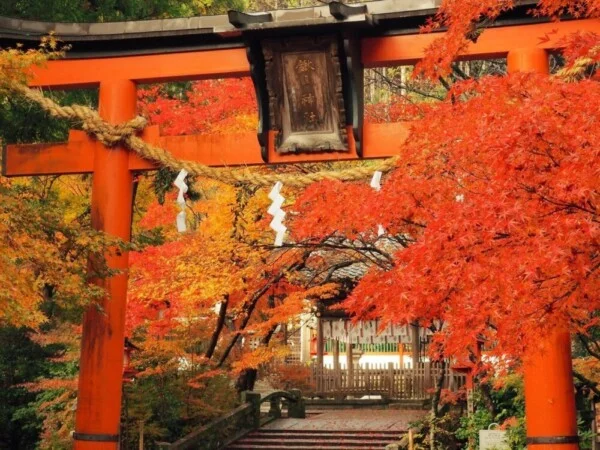
Hidden-gem level: B
In Kyoto City few people know it, so it’s a hidden spot; in Kameoka almost everyone knows it, so it’s not very hidden.
For autumn leaves in Kameoka, this is the first place people mention.
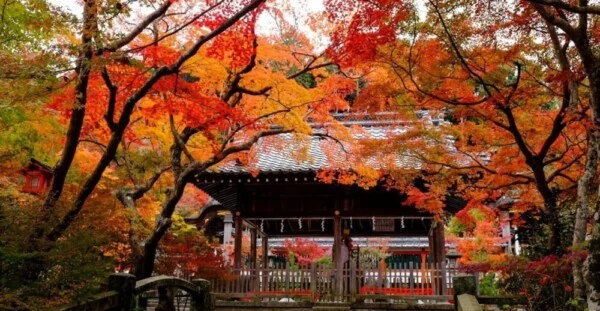
While it met many of the criteria for an “A” rating, the recent growth in visitors from China and Taiwan places it in category “B.”
Before long, it may “graduate” and no longer be a hidden autumn-leaf spot in Kyoto.
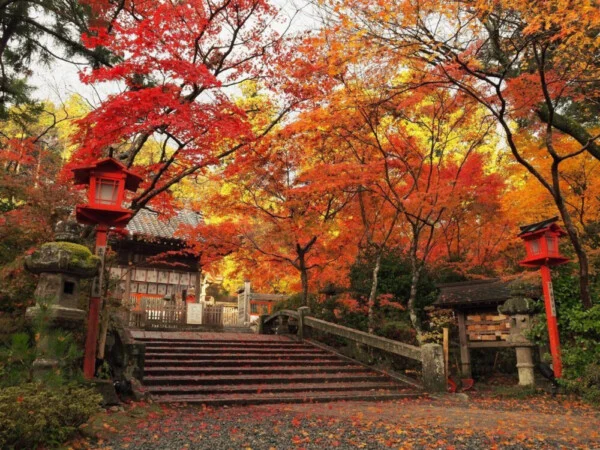
For sightseeing in Kyoto, leave it to MK’s chartered sightseeing taxi.
Your private driver is a Kyoto expert who handles both transport and guiding.

